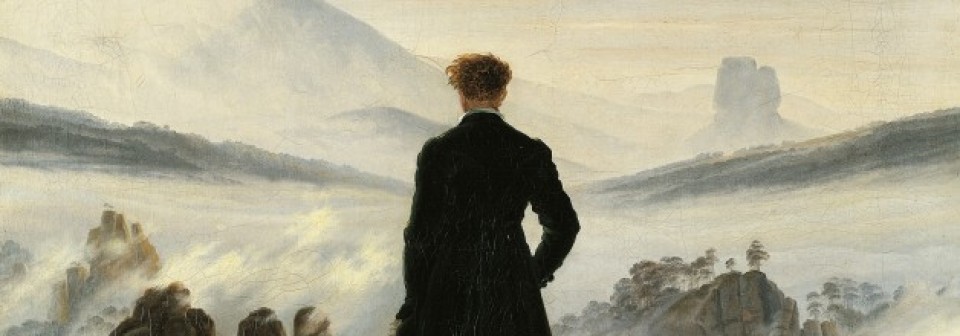Patrick Thomas Morgan, “Biological Aesthetics: Thoreau, Gender, and Botany” (1-28)
A leaf, for Thoreau, is a dynamic concept that allows him to take seemingly disparate entities and establish an underlying connection, a blurring of boundaries, whether that means mind and body, organic and inorganic, literature and science, or – as this study shows – female and male. In the 1850s when Henry David Thoreau was avidly reading both aesthetic and botanical texts, he playfully envisions leaves as having a male and female side. This imaginative intermingling of the male and female genders on a single leaf accompanies the commingling of two domains that, for Thoreau, are connected: aesthetics and the science of botany. This essay argues that aesthetics and botany occasion a gender inflection in which Thoreau simultaneously inscribes gender onto a single leaf and undermines that inscription. Botany – in part – enabled this gender inflection insofar as Thoreau engages with Johann Wolfgang von Goethe’s concept of the ür-leaf, the major pre-Darwinian tool for conceptualizing metamorphosis. Thoreau uses the ür-leaf’s protean aspect to envision an underlying gender connection. The picturesque – in part – enabled this gender inflection insofar as this was a traditional method forundermining binaries, such as the art/nature binary. The concept of the beautiful – in part – enabled this gender inflection insofar as the material specificity of the leaf Thoreau engenders (Andromeda polifolia) physically resembles the line of beauty, an aesthetic term Thoreau associates with gender inflection. This study changes the way scholars envision Thoreau’s relation to science by revealing how gender conceptions facilitated his empiricism. Writing gender out of science, in this context, only results in a vitiated view of Thoreau’s relation to that discipline.
Doublass Madison Furrh, “The Freedom to Starve: Melville, Marx, and the Trans-Atlantic Political Discourse of the Starving Laborer” (29-64)
From a New Historicist approach, “Bartleby, the Scrivener” is situated within the political and economic discourses of the 1850s where chronic hunger and starvation plagued the free laborer. The newspapers of the 1850s document countless free laborers that died of starvation. In fact, Karl Marx, while working for Horace Greeley’s New-York Tribune catalogued victims of “social murder,” or death by starvation, in the city’s newspapers at the same time Melville was gathering materials for his tale (Engels 70). Death by starvation was the central and most damning critique levied against the northern economic system and was expressed everywhere except within the discourse of free labor itself, where it is conspicuously absent. To this end, Melville constructs a protagonist who is a perfect republican operative. Indeed, Bartleby’s unbending commitment to republican virtues – honesty, industry, and frugality – do not lead the laborer to wealth, but result in chronic malnutrition and, finally, outright starvation. Bartleby’s fidelity to capitalist ideology is also evidenced in his preference not to perform unpaid labor like chattel as well as in his ideologically acculturated refusals of charity. Finally, Melville’s complex critique of hunger and the virtuous poor comes sharply into focus with the discovery of Bartleby’s savings’ bank – the core republican artifact of the period – which signals the scrivener’s desire to participate in the capitalist economy as disseminated in 1850s economic and political discourses. However, Bartleby’s savings’ bank – scraped together through rigorous asceticism – not only causes him to deny the needs of his body, but also results in a “general distorting of individualities which turns them into their opposite and confers contradictory attributes upon their attributes” so that the “perfectly honest” Bartleby who “frequently restored six pences and shillings” to the wealthy lawyer, is by tale’s end, viewed as a “gentleman forger” and “a vagrant” (Marx Economic 61; 44, 42). “Bartleby, the Scrivener” is an exploration into the dominant political and economic ideologies of the period and the perspectives they shape that interpret poverty as vice in order to legitimate the ruthless social divisions that define the antebellum period.
Kevin A. Morrison,“‘Armed Thinker,’ ‘Militant Stoic’: John Morley through French Eyes”(65-92)
Without connections, money, or experience, John Morley became one of the period’s leading men of letters – publishing a number of widely respected historical studies and biographies – and a significant political figure. His many admirers included the literary critic and Anglophile Augustin Filon, who published a lengthy character sketch of him in the November 1891 edition of Revue des deux mondes. Two years later, Filon included this essay in his Profils anglais, a study of British political figures. It has, until now, never been translated into English. This essay offers a brief introduction to Filon and Morley and an abbreviated and annotated translation of this important historical document.
